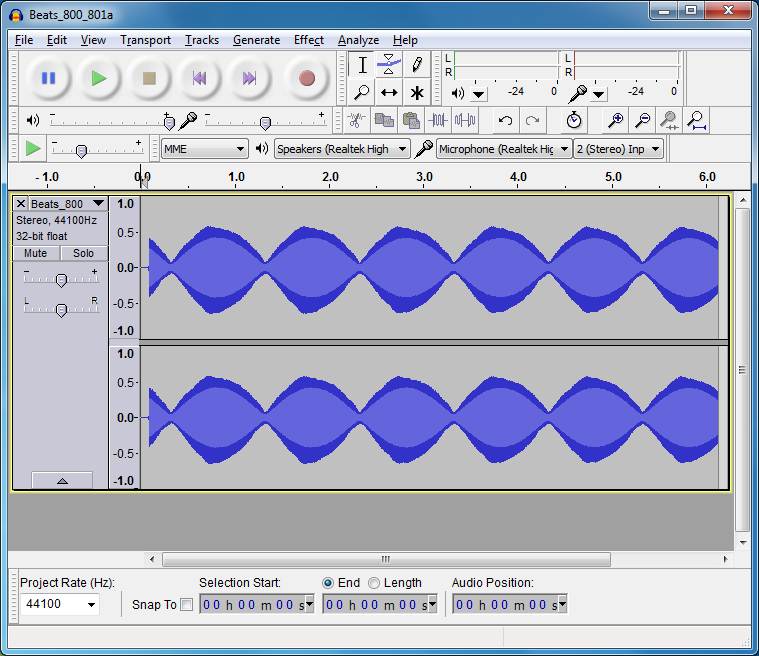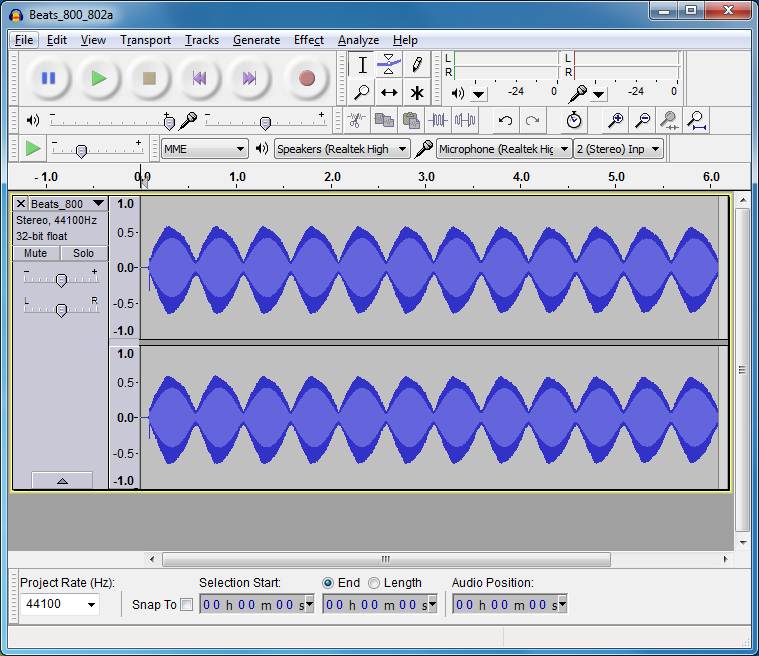Beats
Description
The frequency of a periodic wave (measured in Hertz) is how many cycles the wave goes through per second. If two waves have frequencies that are close but not identical, then at times the two waves will be in similar parts of their cycles -- with crest near crest and trough near trough -- and the superposition (addition) of the two waves will have an increased amplitude. This increased amplitude is known as constructive interference, and in the case of sound would correspond to an elevated volume (louder). There will also arise times when the two waves will be in opposite parts of their cycles -- with crests near troughs -- and then the superposition of the two waves will have a decreased amplitude. This decreased amplitude is known as destructive interference, and in the case of sound would correspond to a reduced volume (quieter).
The repeated loud-soft-loud-soft modulation is the phenomenon known as beats. Beats also have a frequency. It turns out that the beat frequency is equal to the difference in frequencies:
fbeat = |f1 - f2|
Animation
The animation below displays two waves shown in red and blue with similar but distinct frequencies as well as their superposition shown in purple.
Some actual data
The audio file and accompanying figure show the beats phenomenon when the two frequencies are 800 Hz and 801 Hz. Listen for the undulations in the volume. The beat frequency should be 1Hz or once a second. (Warning: the sound is a bit annoying.)

For comparison the audio file and figure below show beats for constituent frequencies of 800 Hz and 802 Hz. Here the beat frequency is 2Hz; the undulations in the volume should occur twice a second.
